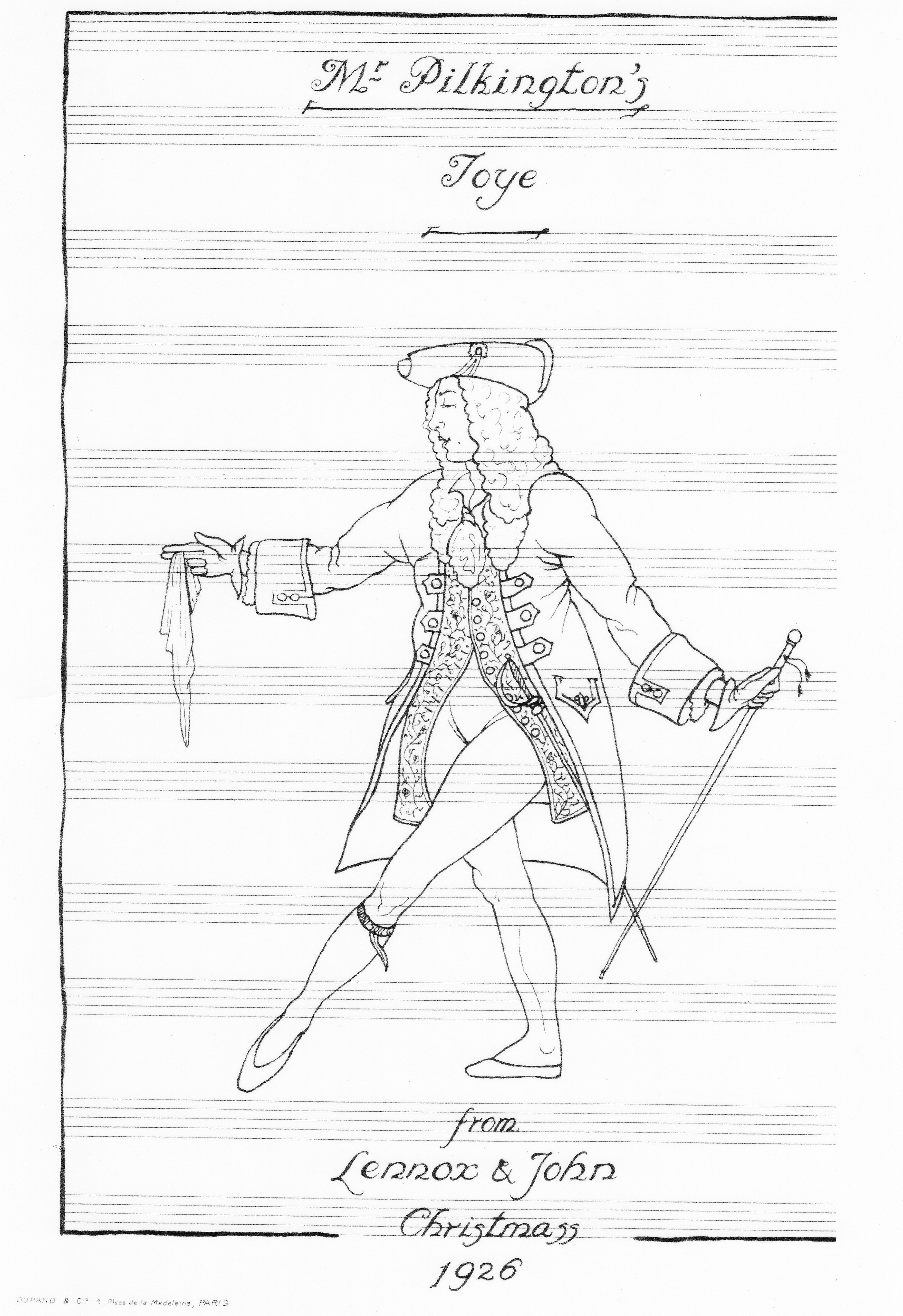Lennox Berkeley works for harpsichord, clavichord and piano
Harpsichordist Christopher D. Lewis explores Berkeley keyboard works, including ‘Mr Pilkington’s Toye’, ‘Suite For The Harpsichord’ and ‘Prelude and Fugue’.

I am currently in the final year of my PhD at the University of Southampton, engaged in a project entitled The Making of the Modern British Harpsichord. In collaboration with staff members and other students, as well as partners outside academia, I am investigating the twentieth-century revival of the harpsichord, concentrating on the period from the 1920s onward, and looking at the origins of the ‘reinvention’ of the instrument. This project explores key figures who were responsible for this revival – the advocates, musicians, collectors, cataloguers and instrument makers – and how they helped to influence contemporary creative practice.
My role in the project is primarily as a harpsichordist, but also in producing a body of work that covers the achievements of the harpsichord in classical and popular music of the modern era. To do this efficiently, I opted for three case studies based around the lives of contemporary composers for the British harpsichord: Stephen Dodgson, Michael Nyman – and Lennox Berkeley, who wrote a number of harpsichord works over the course of his life, and I have found them to be very fine examples of harpsichord music; in fact, such was my admiration that I joined this very society.
One of the earliest examples of a harpsichord piece of his – or at least what we might consider to be a harpsichord piece – is a charming work from 1926 entitled Mr Pilkington’s Toye. Whilst it probably was intended for the piano, I think a convincing argument can be made for it to be played on the harpsichord (besides, pianists have taken our harpsichord literature for centuries). Apart from the fact that it was dedicated to Berkeley’s Oxford friend and roommate, the harpsichordist Vere Pilkington, the piece transfers very effectively to the historical keyboard.

Berkeley probably became familiar with the harpsichord as Pilkington owned one.1 (His father had given it to him for his 21st birthday, and it lived in the rooms he and Berkeley shared in King Edward Street.2) A harpsichord would not have been a common sight at this time, but perhaps it was a very fashionable luxury commodity for a well-to-do Oxford student interested in music and keyboards. In 1923, the same year Pilkington met Violet Gordon-Woodhouse, Norman Wilkinson noted the curious trend of owning a historical keyboard instrument as a fashionable element of interior décor:
The keyboard instruments of the 17th and 18th centuries have not been laid up in lavender, and it is only on rare occasions one can realise that they were the brilliant means of expression of the music which was written for them. In fact, far from being laid up in lavender, they have, as often as not, been pushed carelessly into the outhouse or hayloft (that Ali Baba’s cave of the antique hunter) and there they have died an unheeded death—the corpse being found eventually and sold with, ‘I can put it in perfect order for you, sir (or madam)—and, of course, the case is worth the money—it will be a charming ornament for your room.’ And in the room it is placed and pointed to as ‘That’s my spinet, isn’t it quaint?’.3
Berkeley wrote another, lengthier, piece dedicated to Pilkington: the virtually unknown Suite For The Harpsichord of 1930. This is a fascinating early work for the instrument, of which almost no information exists. If it was ever played we don’t know about it, and certainly it was never published and never recorded, so I have made it my mission to try and make amends on as many of these issues as possible. Firstly, thanks to the amazingly resourceful Peter Dickinson, I was able to obtain a copy of the manuscript score,4 which I then electronically transferred and prepared as an edition (which I am hoping will see the light of day as a published work in the not too distant future), and, most importantly, I plan to give the première at Mottisfont Abbey in Hampshire later this year. Mottisfont was the childhood home of the harpsichord collector Raymond Russell, and fittingly we have located documents and photographs of Berkeley visiting Russell at Mottisfont.
Berkeley’s other compositions for the harpsichord include the well-known Concertino, Op. 49 (1955). As specified in the original score, it was written for recorder (or flute), violin, cello and harpsichord (or piano) and was commissioned by Carl Dolmetsch and received its premiere performance at Wigmore Hall on 1 February, 1956. The performers were Carl Dolmetsch (recorder), Jean Pognet (violin), Arnold Ashby (violoncello), and Joseph Saxby (harpsichord).
In 1960, Berkeley wrote another work for historical keyboard, this time in the shape of a composition for clavichord. This work, Prelude and Fugue, was dedicated to the instrument builder Michael Thomas (1922-97), also an active performer whose recordings are still remembered.
The final work involving harpsichord [as opposed to ‘Piano (or Harpsichord)’] is a vocal chamber work called Una and the Lion (1979). This piece was again written for Carl Dolmetsch, and received its première at Wigmore Hall on 22 March, 1979, performed by Elizabeth Harwood (soprano), Carl Dolmetsch (recorder), Marguerite Dolmetsch (viola da gamba), and Joseph Saxby (harpsichord). The work was funded by the Arts Council of Great Britain. The University of Southampton has recently purchased Saxby’s original performing score for this piece, which has revealed much about the original performance of the work including the harpsichord registrations Saxby used.
I recently recorded Mr. Pilkington’s Toye along with another piece dedicated to Pilkington: For Vere, (probably not really ever seriously intended for harpsichord, but I thought it worked rather well); both will be released on a compilation recording of modern British harpsichord music by Naxos in March of this year.5 It also features music by Herbert Howells, John Jeffreys and Gavin Bryars.